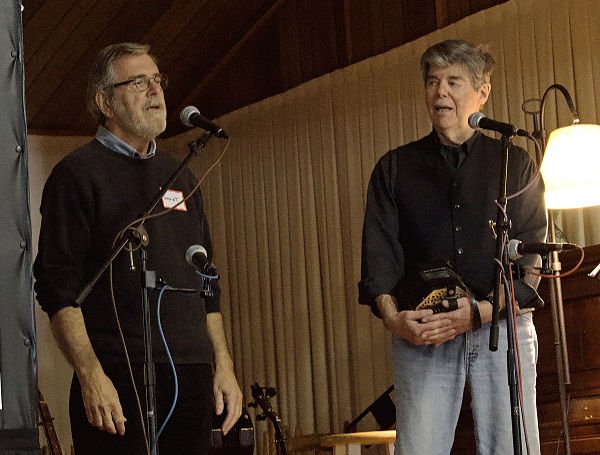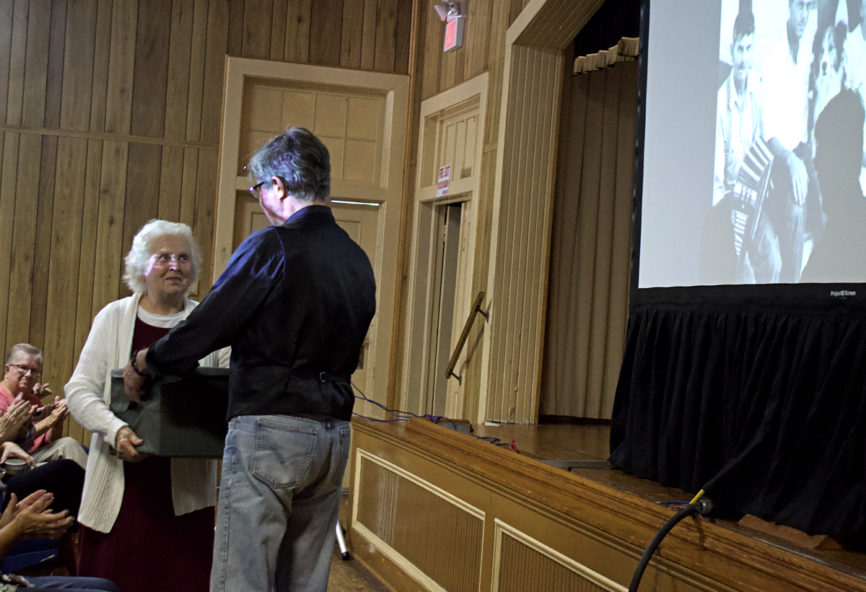We don’t think of the Outer Banks as a remote place. Admittedly part of its charm is that there are no major airports here and certainly no way for a cruise ship to dock, so it does take a little extra effort to get here..
But it’s really not all that difficult.
However, 70 or 80 years ago that was not the case. Nags Head was well-established as a tourist town, and Manteo was just coming into its own. Yet for the most part, the Outer Banks was a remote, isolated place—a place wherein some ways time had stood still.
That may have been brought Frank and Anne Warner to the Outer Banks to record the traditional songs that were still being sung in Wanchese or Kitty Hawk or any of the more remote places of the area in the 1940s and early 1950s.
Gerret and Jeff Warner, the sons of Frank and Anne were recently on the Outer Banks to debut their multi-media event “From the Mountains to the Sea” highlighting the work their parents had done collecting those traditional sounds.

Brought to the Outer Banks by the Outer Banks Conservationists (OBC), it was fitting that the presentation took place in the Wanchese Community Center. Until Manteo High School opened in 1983, the Community Center was the K-12 school for the village.
Wanchese was also where the Warners collected some of their most noteworthy recordings when they were on the Outer Banks.
Although Frank and Anne grew up in the South, by the 1930s the couple was living in Greenwich Village where Frank was an executive with the New York City YMCA. An amateur musician, Frank, attended Duke. The recordings his sons played of their father performing showed a remarkably talented musician with a powerful singing voice.
It’s difficult to say exactly what drew the couple to traveling to North Carolina to record the traditional songs. Sometimes they journeyed to the mountains; other times to the Outer Banks. They did all of it on their own time, collecting over 1000 recordings, recordings that Gerret and Jeff have donated to the Library of Congress.
According to Jeff Warner, who narrated “From the Mountains to the Sea,” his mother wrote in her diary about their first trip to the mountains where they heard the traditional music, “It was the beginning of our lifelong interest in traditional music and the people who remembered it.”
The Warners were attracted to the remote places, the villages and isolated homesteads where electricity was not yet available and the influence of radio and the music of the day was minimal.
Wanchese of 1940 fit that description very well and it was there that the Warners first met Tink and Eleazar Tillett. The journey from Elizabeth City, the closest town of any size, entailed crossing the predecessor to the Wright Brothers Bridge, a low to the water, wooden span that was impassable during high winds or waves.

It seems Frank had heard about Tink Tillett from a college professor who had made some recording in the 1920s of him.
In the recordings that the Warners made, Tink, a fisherman by trade, sings sea chanties, child ballads, and songs from the 19th century about fishing and farming. He even broke out his Sears mail-order accordion and played a late 19th-century tune, “Someone is Waiting for Me.” He played it very well, although he did not know the words to the song.
The Warners and Tilletts agreed to meet again the following summer, but Tink passed away that spring. Nonetheless, the Warners came back and met with Eleazar and her sister Mary Etheridge and recorded more songs.
It was the beginning of a long friendship between the families.
In 1972 Tink’s son, Cliff, gave the Warners his father’s accordion. The accordion was subsequently inherited by Jeff, who is a musician.
At the beginning of the program, Jeff noted that he loved the instrument but wondered what he should do with it and came to the conclusion that it should be returned to the Tillett family. With the help of the OBC, the Warners made sure that June Tillett Basnight, Tink and Eleazaer’s granddaughter, were in the audience and the accordion came home.

“From the Mountains to the Sea” is remarkable in how it highlights the sounds of the traditional music of the South. Through the Warner recordings—some of them are a bit rough around the edges—and the photography of Frank and Anne Warner, an amazing story emerges of the people and times.
The Outer Banks plays an important role in the work, although there are also recordings of mountain music and more. The North Carolina debut was Saturday in Wanchese. Hopefully, it will be shown many more times throughout the state.
